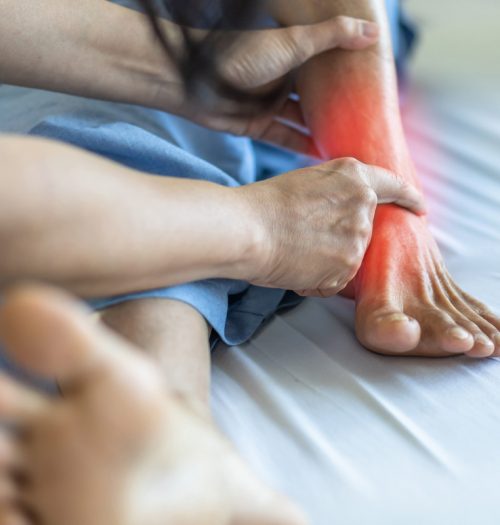What is Mallet Toes?
Many disorders can affect the joints in the toes, causing pain and preventing the foot from functioning as it should. A mallet toe occurs when the joint at the end of the toe cannot straighten. Excessive rubbing of the mallet toe against the top of the shoe can lead to pain and the development of a corn. The tip of the toe is often turned down against the shoe causing pressure and discomfort.
Cause
The development of mallet toes is often caused by bone and muscle imbalances. These imbalances become exaggerated in people with active lifestyles. For example, people who are constantly on their feet or participate in athletic activities are more likely to develop mallet toes.
Arthritis can also lead to many forefoot deformities including mallet toes. Mallet toes can cause extreme discomfort and can be aggravated if restrictive or improperly fitting footwear is worn for a prolonged period of time.

What is Mallet Toes?
Many disorders can affect the joints in the toes, causing pain and preventing the foot from functioning as it should. A mallet toe occurs when the joint at the end of the toe cannot straighten. Excessive rubbing of the mallet toe against the top of the shoe can lead to pain and the development of a corn. The tip of the toe is often turned down against the shoe causing pressure and discomfort.
Cause
The development of mallet toes is often caused by bone and muscle imbalances. These imbalances become exaggerated in people with active lifestyles. For example, people who are constantly on their feet or participate in athletic activities are more likely to develop mallet toes.
Arthritis can also lead to many forefoot deformities including mallet toes. Mallet toes can cause extreme discomfort and can be aggravated if restrictive or improperly fitting footwear is worn for a prolonged period of time.

Treatment and Prevention
Any forefoot problems that cause pain or discomfort should be given prompt attention. Ignoring the symptoms can aggravate the condition and lead to a breakdown of tissue, or possibly even infection. Conservative treatment of mallet toes begins with accommodating the deformity. The goal is to relieve pressure, reduce friction, and transfer forces from sensitive areas.
Shoes with a high and broad toe box (toe area) are recommended for people suffering from forefoot deformities such as mallet toes. This prevents further irritation in the toe area from developing. Other conservative treatment includes forefoot supports such as gel toe caps, gel toe shields, and toe crests. Gel forefoot supports provide immediate comfort and relief from common forefoot disorders without drying the skin.
Your podiatric physician/surgeon has been trained specifically and extensively in the diagnosis and treatment of all manners of foot conditions. This training encompasses all of the intricately related systems and structures of the foot and lower leg including neurological, circulatory, skin, and the musculoskeletal system, which includes bones, joints, ligaments, tendons, muscles, and nerves.
Treatment and Prevention
Any forefoot problems that cause pain or discomfort should be given prompt attention. Ignoring the symptoms can aggravate the condition and lead to a breakdown of tissue, or possibly even infection. Conservative treatment of mallet toes begins with accommodating the deformity. The goal is to relieve pressure, reduce friction, and transfer forces from sensitive areas.
Shoes with a high and broad toe box (toe area) are recommended for people suffering from forefoot deformities such as mallet toes. This prevents further irritation in the toe area from developing. Other conservative treatment includes forefoot supports such as gel toe caps, gel toe shields, and toe crests. Gel forefoot supports provide immediate comfort and relief from common forefoot disorders without drying the skin.
Your podiatric physician/surgeon has been trained specifically and extensively in the diagnosis and treatment of all manners of foot conditions. This training encompasses all of the intricately related systems and structures of the foot and lower leg including neurological, circulatory, skin, and the musculoskeletal system, which includes bones, joints, ligaments, tendons, muscles, and nerves.
